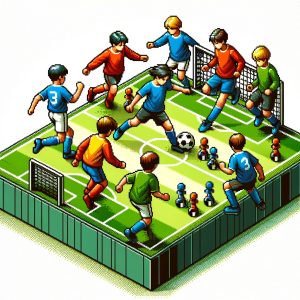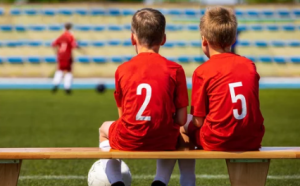
Tactical and Emotional Development
Imagine your soccer team down by one goal in the last five minutes of the match. Players scramble to keep their composure, make split-second decisions, and push their physical limits to equalize. Soccer isn’t just about running fast or kicking hard—it’s a symphony of physical fitness, tactical brilliance, and emotional resilience. A recent study dives deep into these dimensions, analyzing the physical, tactical, and emotional characteristics of youth soccer players. The findings reveal a roadmap for coaches eager to unlock their players’ full potential.
The Foundation of Soccer Success: Physical Traits
When it comes to youth soccer, physical fitness lays the groundwork for success. This study assessed attributes like sprinting speed, endurance, and strength in players aged 12 to 13, comparing high-performing “Premier” players with those in slightly lower competitive categories. Unsurprisingly, Premier players outperformed their peers in key fitness tests like the yo-yo intermittent endurance test, which measures stamina and recovery. These players showed superior VO2max levels—a critical marker of cardiovascular fitness that allows them to maintain high intensity for longer periods.
For young players, drills that enhance aerobic endurance, speed, and agility can significantly impact performance. Think shuttle runs, sprints, or ladder drills that mirror the dynamic demands of the game. Coaches, however, should remember that fitness is only part of the equation.
Tactical Knowledge: The Game-Changer
What often separates good players from great ones is their tactical intelligence. In this study, Premier players demonstrated better decision-making, support-level awareness, and in-game performance than their peers. This doesn’t happen by chance—it’s the result of intentional, scenario-based training.
For example, small-sided games (3v3 or 4v4) allow players to develop their spatial awareness and problem-solving skills under pressure. Players who train in environments that mimic real match conditions are better prepared to handle soccer’s unpredictable nature.
Coaches can amplify tactical learning by encouraging players to analyze games, both theirs and others. Watching a recorded match and discussing positioning, timing, and decision-making helps players develop their “soccer IQ.”
Emotional Intelligence: The Hidden Advantage
Here’s a surprising twist: the best players aren’t just fitter or smarter on the field—they’re also more emotionally intelligent. The study found that Premier players scored higher in emotional intelligence (EI), which includes traits like self-awareness, emotional regulation, and interpersonal skills. However, these players also experienced higher levels of melancholy and confusion, underscoring the psychological pressures that come with competitive success.
Why does EI matter in soccer? Emotional resilience can mean the difference between thriving under pressure and crumbling. A player who can control their nerves during a penalty kick or bounce back after making a mistake adds immense value to their team.
Coaches should foster a supportive environment to build EI in young athletes. Activities like guided breathing exercises before games or reflective team discussions after matches can help players process emotions and build mental fortitude.
Real-World Implications: Bridging the Gaps
The research highlights a critical takeaway: training programs should focus on a balanced development of physical, tactical, and emotional skills. Coaches and club managers can draw actionable insights from this study:
- Physical Conditioning: Prioritize fitness routines tailored to specific game roles. Defenders benefit from endurance drills, while strikers need explosive speed and power.
- Tactical Drills: Incorporate game-like scenarios to sharpen decision-making and situational awareness. Encourage players to think on their feet and communicate effectively during drills.
- Emotional Support: Recognize the mental challenges young players face. Provide resources like sports psychologists or mentorship programs to address psychological stress and foster resilience.
Applications
For Coaches:
- Design practice sessions that integrate all three components: physical drills, tactical exercises, and emotional resilience activities.
- Use video analysis to pinpoint areas where players excel or struggle tactically.
- Incorporate relaxation and focus techniques to help players manage in-game stress.
For Player Development:
- Build personalized training plans that match a player’s unique strengths and weaknesses, from stamina to decision-making.
- Encourage players to reflect on their emotional responses during games and identify triggers for stress or distraction.
For Club Management:
- Invest in holistic player development programs that include mental health resources and tactical workshops.
- Use fitness and emotional intelligence assessments to create well-rounded training curricula.
- Emphasize the importance of recovery and self-care to prevent burnout.
Conclusion
This study sheds light on the multidimensional nature of youth soccer performance. The best players don’t just run faster or think smarter—they master the interplay of physical, tactical, and emotional skills. Coaches, players, and clubs that adopt a holistic approach to development will cultivate athletes ready to face the game’s unpredictability head-on. After all, soccer is more than a sport; it’s a test of body, mind, and heart.
Elevate your understanding of the beautiful game with ‘This Week in Soccer’.
Subscribe now to our newsletter and be part of a community that transforms theoretical knowledge into practical mastery. Don’t miss out on the chance to access groundbreaking insights and redefine your approach to soccer. Subscribe today!



